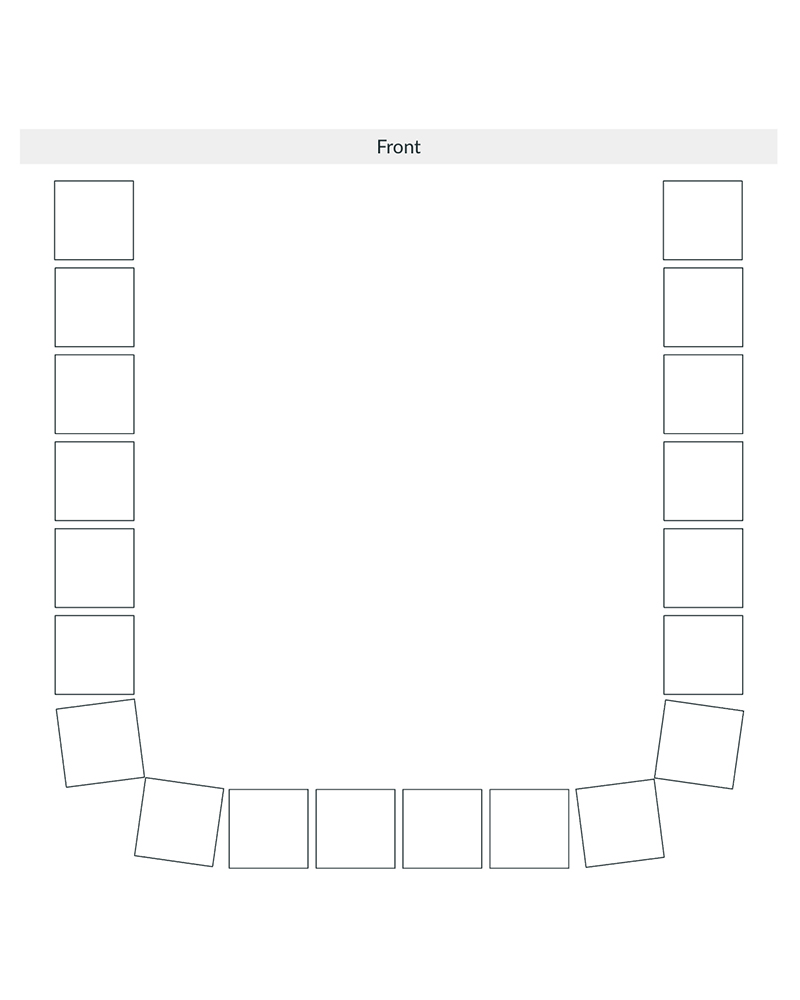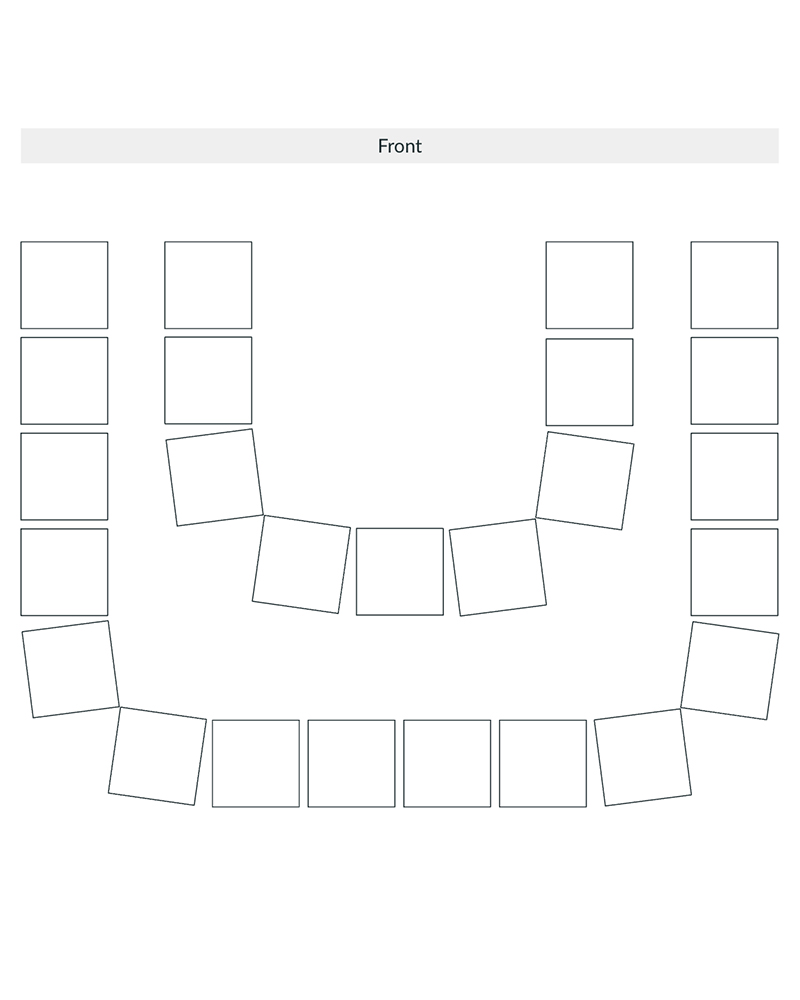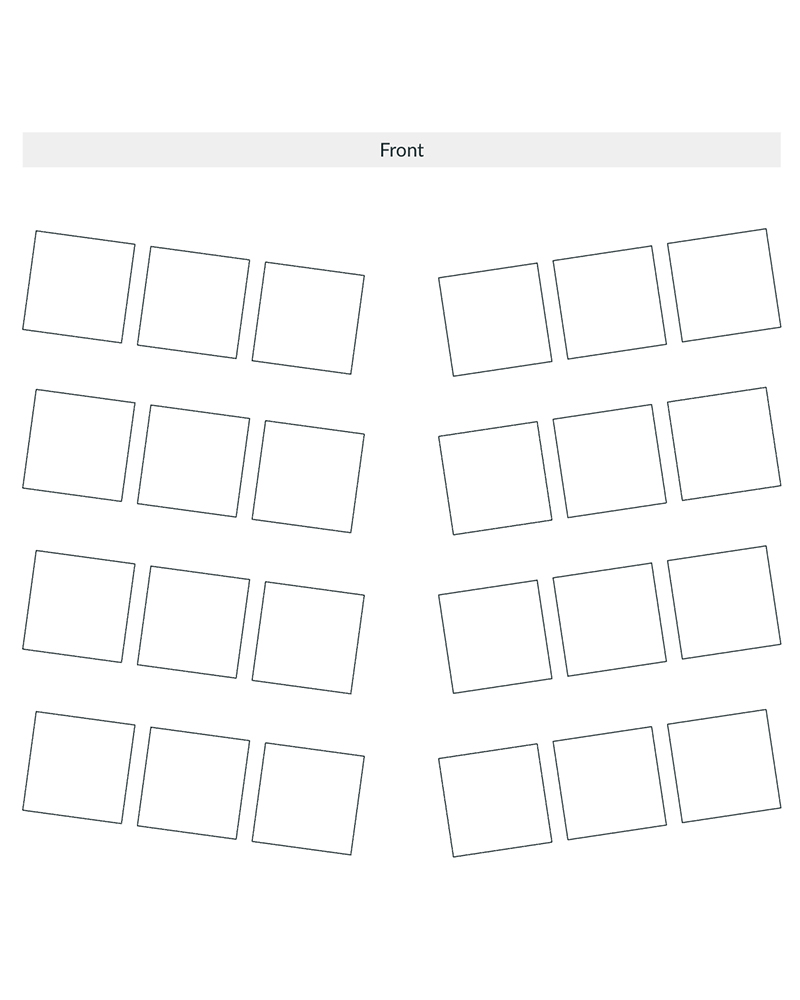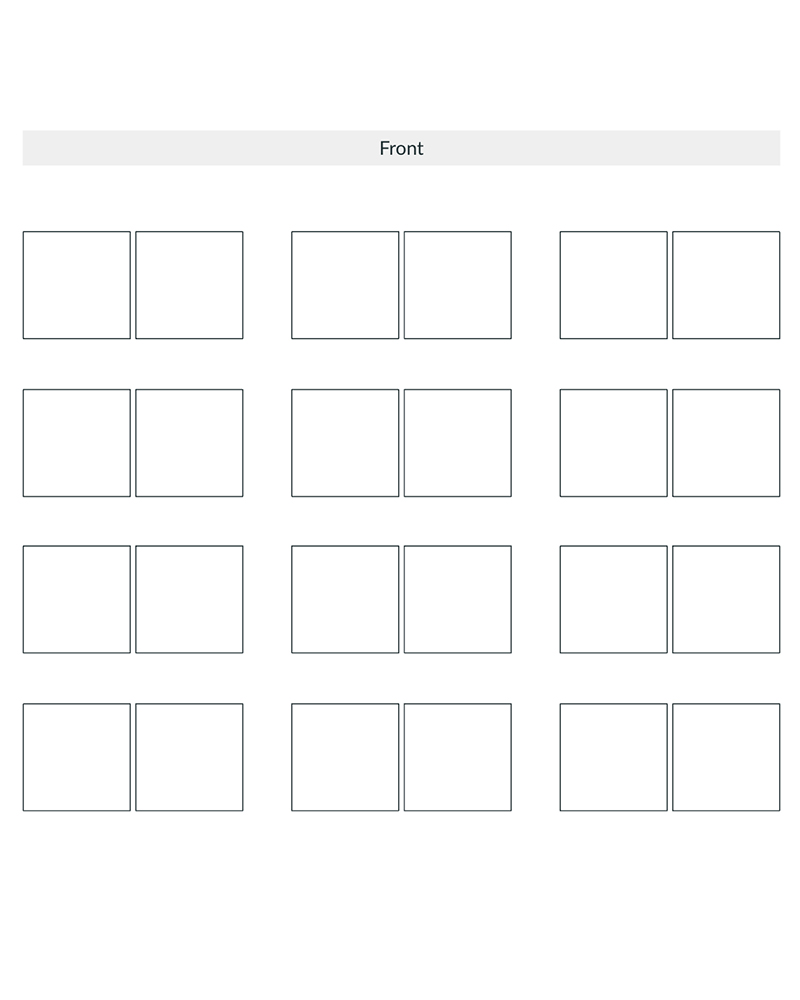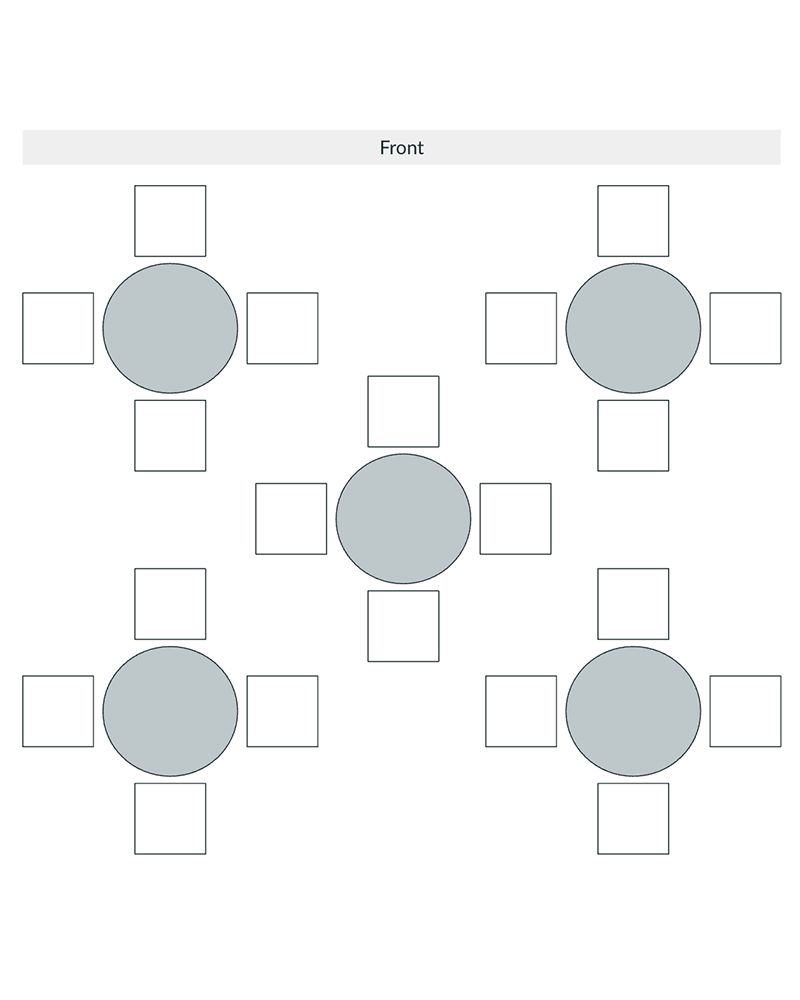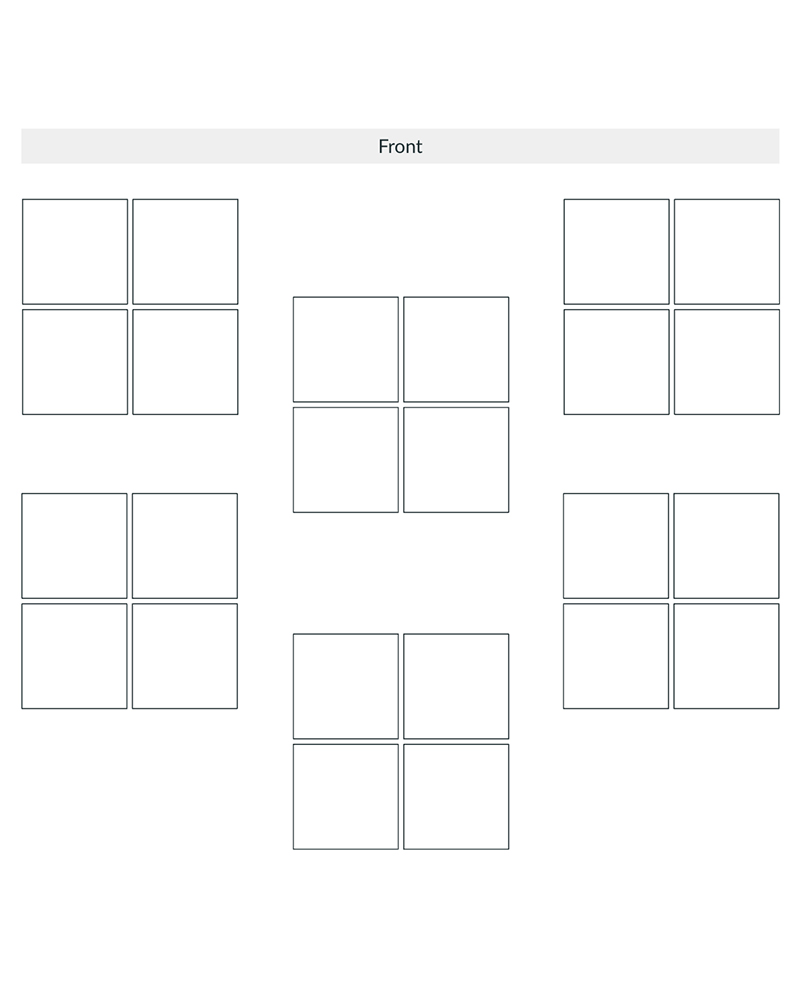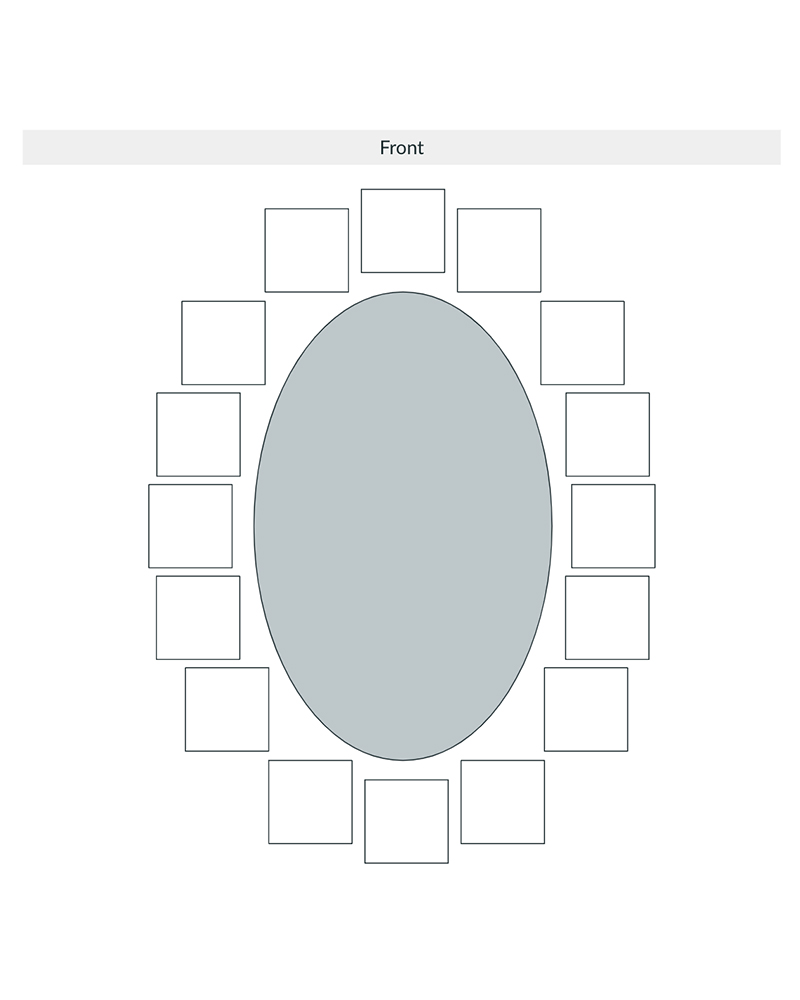
9 Classroom Seating Chart Arrangements (Free Printable Bundle)
Choosing the right classroom seating chart arrangement can feel like a challenge, since every room and group of students is different. What works well one year might be a complete failure the next. It’s smart to have a variety of classroom setup ideas in your toolkit so you can make changes whenever you need to.
We’ve rounded up some of the most popular setup and seating arrangements for classroom and considered the pros and cons of each. Once you’ve chosen one, be sure to get your free, fully editable printable classroom seating charts by filling out the form on this page!
How To Choose the Best Classroom Seating Chart Arrangements
The right seating arrangement depends on your needs, and there’s no one best setup. Many teachers these days are trying out flexible seating, though it’s not for everyone. If you’re looking for more-traditional classroom setup ideas, there are still plenty of options to consider. But how to choose? Ask yourself these questions:
What type of instruction do you use most often?
If you mainly do teacher-led instruction like lectures, you’ll want to choose a setup that keeps students focused on the front of the classroom. But if your students do a lot of small-group work or whole-class discussion, desk groupings might be more effective.
What do you have to work with?
How big is your classroom? Do you have tables or individual desks? These two factors will play a huge part in the setup you choose. For instance, a horseshoe shape is terrific for fostering class discussion, but you’ll wind up with a lot of wasted space in the middle. If your classroom is already cramped, this won’t work well for you.
Can you see every student’s face as you teach? Can every student easily see you?
Teachers know it’s important to be able to make eye contact with students to check for understanding as they teach. It’s also important that every student be able to see you and your visual aids, without straining or feeling uncomfortable. Tip: Don’t forget to consider how you’ll monitor student screens to ensure everyone is staying on track.
Do you need to keep students separated?
In some cases, it’s better to keep students at arm’s length from one another for safety or behavior reasons. If you have desks, a grid setup will likely be your best choice. For tables, try seating students one on each side, staggered so they’re not directly facing each other.
Can you easily move around the classroom and get to each student if needed?
Unless you’re lecturing to a very large group, you’ll likely need to be able to move from seat to seat, checking work and answering questions. Think about how you’ll give yourself enough space to do that, and if you’ll have a sense of privacy when talking to individual students at their seats.
How will you accommodate seating needs from IEPs and 504s?
Many (if not most) IEPs and 504 plans specify that the student is to have preferential seating of some sort. This might be near the teacher, away from distractions, close to an interpreter, etc. Will your preferred seating plan allow you to accommodate these requirements?
What do experts say about classroom seating arrangements?
There have been many studies into how classroom seating chart options affect learners, both academically and socially. As far back as 1967, Robert Sommer found that students who were seated front and center were more likely to participate in class. A 2008 study in the journal Support for Learning noted that seating students in rows tended to minimize disruptive behavior, but it also recommended that teachers adapt their seating arrangements to the nature of the tasks.
In 2023, the journal Teaching and Teacher Education published a qualitative study of classroom seating in upper elementary grades. They found that teachers used seating arrangements quite differently depending on their goals and preferences, and no one classroom seating chart was best. In fact, while teachers in the study shared similar academic and social goals for their students, they all employed different, and even somewhat opposite, strategies to achieve them. And none of the teachers considered their initial seating arrangement permanent; they rearranged desks and students as needed throughout the year.
Overall, research suggests that teachers should be as flexible as possible when arranging their classroom setups. They should also plan to revisit and revise their classroom seating charts on a regular basis, making major and minor adjustments depending on the circumstances.
Popular Classroom Seating Chart Arrangements
Keep all of the above questions in mind as you consider whether one of these classroom setup ideas will work for you.
Want your free seating charts for one or more of these arrangements?

Fill out the form on this page and get printable versions of all the classroom seating arrangements featured above. You’ll receive a printable PDF plus a fully editable Google Slides version.
What are your favorite classroom seating chart options and setup ideas? Come share your ideas and ask for advice in the We Are Teachers HELPLINE group on Facebook.
Plus, flexible seating on a budget? It can be done—learn how here!
Source link


